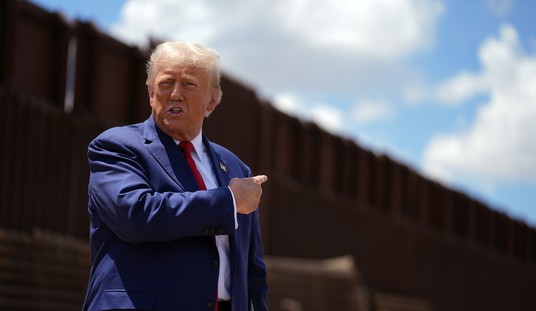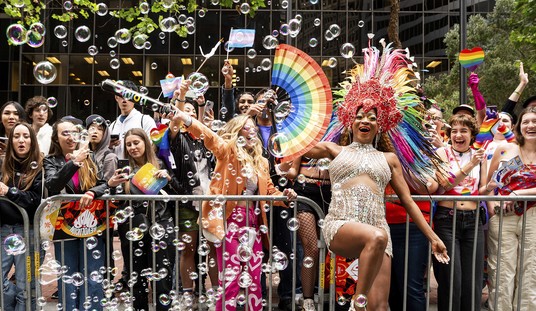Gee, I wonder why Americans don’t put their trust in their elected leadership these days? After Bill de Blasio closed schools in New York City, supposedly on the basis of science, parents and health experts erupted in protest. No data actually supported the idea that elementary schools spread COVID-19, especially not anywhere near the levels to which bars and restaurants do — which de Blasio wants to keep open.
Today, de Blasio suddenly backpedaled, at least partially:
Mayor Bill de Blasio announced on Sunday that he would reopen public elementary schools, abruptly shifting policy in the face of widespread criticism that New York City was placing more of a priority on economic activities like indoor dining than the well-being of its children.
Mr. de Blasio said that middle and high schools would remain closed, but he also signaled that he would overhaul how the city manages schools during the pandemic, which has forced millions of children in the United States out of schools and is widely perceived to have done significant damage to their education and mental health.
The mayor said the city would abandon a 3 percent test positivity threshold that it had adopted for closing the school system, the largest in the country, with 1.1 million children. And he said the system would aim to give most parents the option of sending their children to school five days a week, which would effectively end the so-called hybrid learning system.
Good news? Sorta. Leave it to de Blasio to offer a particularly douche-tastic codicil on returning to classrooms. Students are only eligible if they already signed up for the hybrid learning program, which leaves two-thirds of Big Apple schoolkids still locked out:
Students can return only if they have already signed up for in-person learning, meaning fewer than 335,000 of the city’s schoolchildren, or roughly a third, are even eligible.
That’s because de Blasio and Andrew Cuomo did their level best to frighten parents out of using any in-person option at all. They only gave them a few weeks to suss out the situation, weeks in which the pair kept hinting that schools would have to be closed. Guess what they chose to do?
Several weeks before Mayor Bill de Blasio shut New York City’s school system, the nation’s largest, amid a surge in coronavirus cases, he handed parents a daunting deadline: They had only a few weeks to decide if their children would return to classrooms this school year, and likely until at least next fall.
This week, New Yorkers returned their verdict: Only about 35,000 children who had been learning remotely at the start of the school year asked to switch into some in-person learning whenever city schools reopen.
The number of families choosing to return to classrooms represents both a major disappointment and surprise for the mayor, who has said he has a mandate from parents to reopen schools. Parents were asked to make the wrenching decision about how their children would learn for the rest of the school year while the threat of systemwide closure loomed. All city schools closed for in-person learning indefinitely on Thursday, though the mayor has vowed to reopen them as soon as possible.
Now de Blasio wants to hold them to that commitment despite today’s admission that his policy was hyperbolic and unproductive in the first place. Not to mention that even at that time, the science pointed toward keeping schools open and perhaps consider more restrictions on in-person dining and boozing:
On Wednesday, New York City announced that the nation’s largest district — one of the first to open for in-person instruction — would join the ranks of cities closing their public schools.
But as the country grapples with how to educate kids while also curbing the coronavirus, the emphasis on transmission in schools may be misplaced. The best available data suggests that infection rates in schools simply mirror the prevalence of covid-19 in the surrounding community — and that addressing community spread is where our efforts should be focused. …
Sadly, schools in areas with significant minority populations do have higher infection rates — but the same is true of the communities these schools are located in. Again, there is a noticeably lower rate of infection among younger students than among staff, suggesting that sending children in these neighborhoods to school for in-person instruction would not increase the danger of their contracting covid-19. Given that these are precisely the groups that are losing the most from distance learning, this suggests we should make their return to in-person school a priority.
The data from New York also makes it possible to look at the distribution of cases. During the four-week period studied, roughly 80 percent of schools in the state reported no covid-19 cases at all. And of those schools that did detect covid, nearly 90 percent had only one or two cases across all students and staff. A single case is unlikely to be the result of in-school transmission — meaning students and teachers don’t appear to be catching covid from each other.
Note well the date on this Washington Post article — November 20, two days after de Blasio announced the closure of all public schools.That’s also the deadline de Blasio gave parents to make up their minds about school access, too. By that time, Brown University professor Emily Oster already had sufficient data from New York to conclude that schools weren’t at risk for become super-spreader epicenters. It took nine days for de Blasio to reconsider, and then only partly and with one last punitive prerequisite for New York City’s parents.
That data almost certainly isn’t the catalyst for de Blasio’s “abrupt” change in position. I’d bet dollars to donuts that Dr. Anthony Fauci’s appearance this morning on ABC’s This Week provided that catalyst by contradicting de Blasio’s claims of following the science. Allahpundit forwarded it over to me this afternoon:
Dr. Fauci: "The default position should be to try as best as possible within reason to keep the children in school or to get them back to school […] if you look at the data the spread among children and from children is not really big at all"pic.twitter.com/G0MqlA0NDQ
— Corey A. DeAngelis (@DeAngelisCorey) November 29, 2020
Fauci’s rebuttal clearly made de Blasio’s position untenable, especially in progressive New York City, where Fauci’s credibility almost certainly outstrips every elected official, and not just Trump. But it shouldn’t have come to that, either. DeAngelis also linked to reports from UNICEF and an earlier report from Oster that argued clearly that the science showed no apparent added risk of spread at schools. “The evidence is pointing in one direction,” Oster wrote in early October, six weeks before de Blasio closed the schools. “Schools do not, in fact, appear to be major spreaders of COVID-19.” The UNICEF report from 191 countries declaring schools not to be a risk came out on the very day de Blasio closed the schools.
It’s still an open question whether we should “close the bars” to keep the schools open; Fauci himself notes that’s too glib. But maybe New Yorkers should start to consider closing de Blasio out of office sometime soon, a move that might improve city voters’ mental and physical health.








Join the conversation as a VIP Member